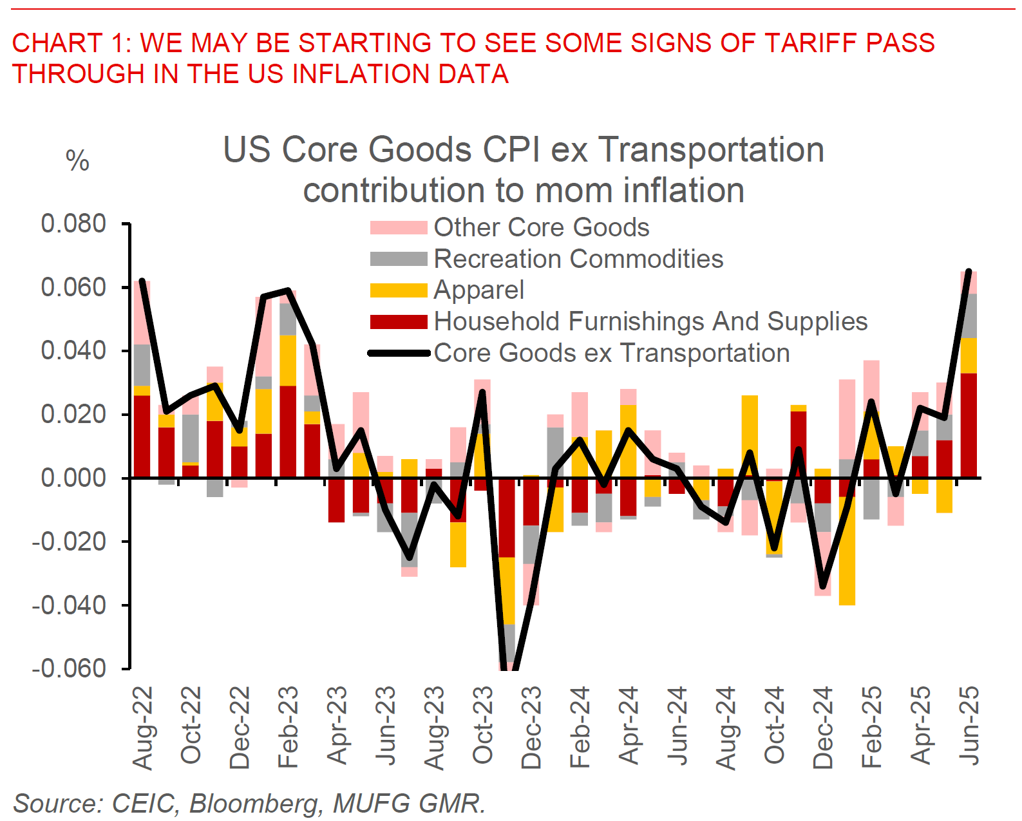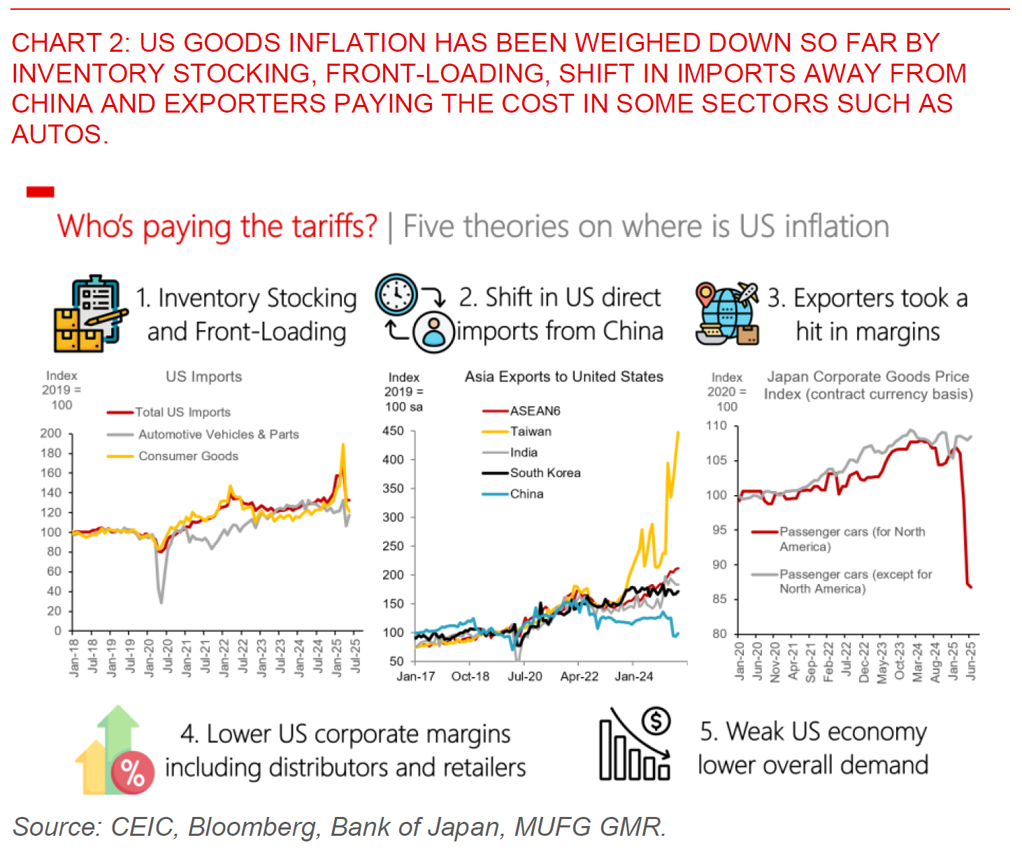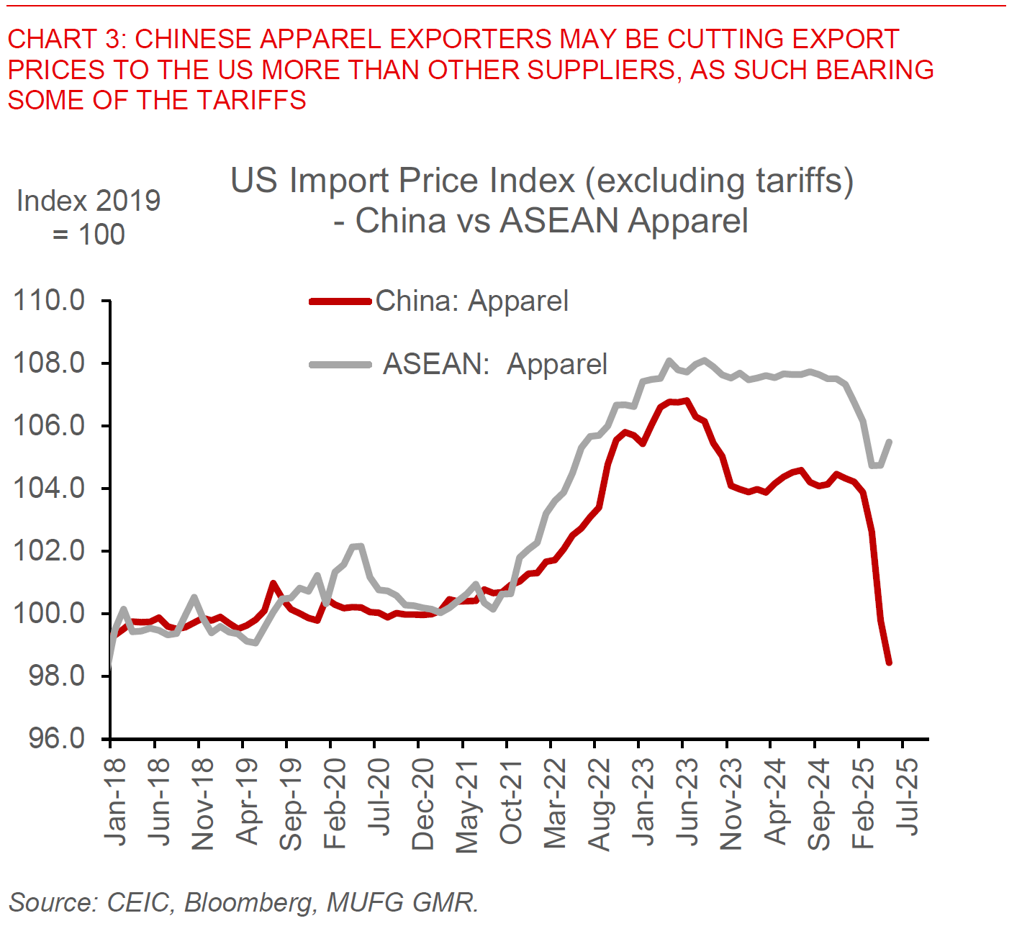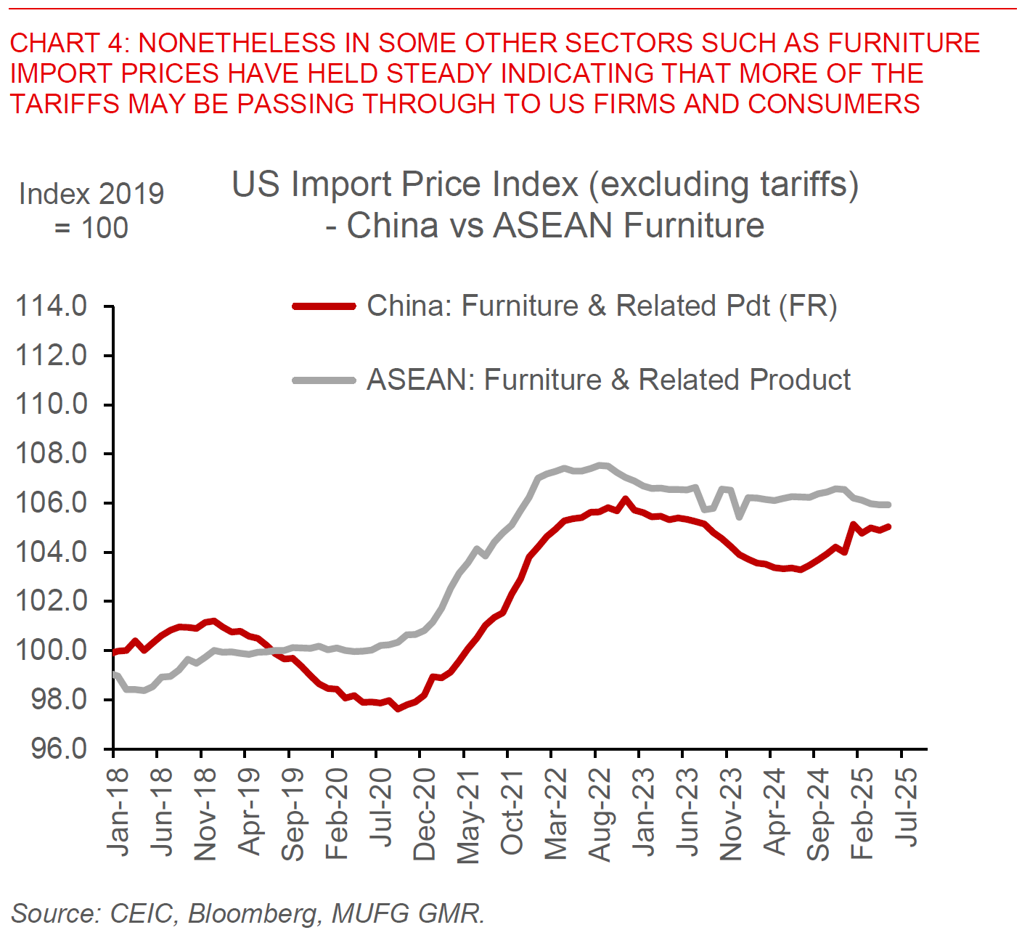Ahead Today
G3: US PPI
Asia: Bank Indonesia
Market Highlights
US CPI inflation for June seemed reasonably manageable on a headline basis, rising 0.3% mom from 0.1% mom previously, and weighed down by lower shelter inflation and also auto prices. While US Treasury yields initially fell on the back of the print, 10-year yields subsequently rose sharply to reach 4.5% with 30-year yields breaching 5%. With these moves, the US Dollar strengthened by 0.5% and weighed on Asian FX.
The key for markets could have been some initial signs of tariffs showing up in the CPI print. Core goods inflation excluding transportation added 7bps to headline inflation, up from 2bps the previous month. Key goods components seeing some meaningful increase includes household furnishings, appliances, toys, sporting goods, and to a smaller extent textiles and apparels. These goods components were thus far outweighed by other components in CPI such as services and autos. Nonetheless, with the price impact of tariffs not yet fully reflected in the official data, more price pressures possibly to be passed through to end-consumers, and most importantly higher tariffs still in the pipeline from here, markets could be rightly pricing out the near-term chance of Fed Funds rate cuts

These US inflation developments are to some extent corroborated by other datapoints, showing that at least so far part of the cost of tariffs may have been shared along the way by other players. The sharp fall in Japan passenger car export prices fits well with the data showing continued softness in auto CPI inflation, while import front-loading, inventory stocking and a shift in the composition of US imports away from China to the rest of Asia could also have softened the effective tariff rate paid by US corporates and ultimately US consumers. US import price data shows a mixed picture across products, with some sharp cuts in apparel import prices from China exhibiting perhaps some cost sharing with US importers, but with steady prices in other manufacturing items such as furniture and household goods, and fits well with the general picture that we see in the June CPI inflation showing some passthrough where perhaps substitutes are scarce and pricing power is stronger in the sector. As such, the extent of inflation pass-through moving forward will also depend on whether these offsets including soft US demand and services inflation dominate.
From a global markets perspective, the key for the Fed could also boil down to a judgement of whether tariffs are a one-off price increase and ultimately weighs on aggregate demand and hence ultimately not inflationary beyond the one-time price bump, and also the extent and magnitude of tariff increases.
Our global team including our US rates strategy team continue to expect more Fed rate cuts than priced by markets and are forecasting 100bps of Fed cuts this cycle, with the key being the soft starting point of the US consumer and economy and the one-off nature of the price impact from tariffs.



